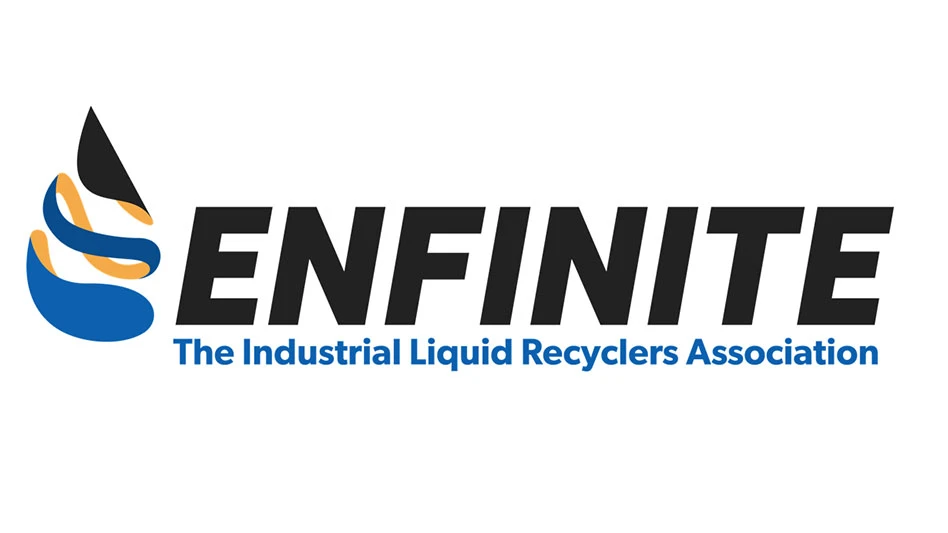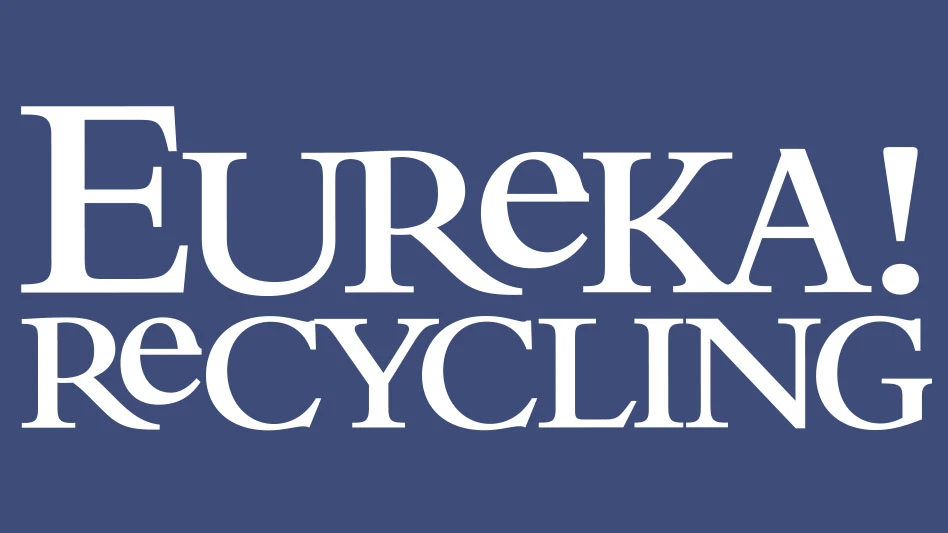
Orlando, Florida, was more than a tourist attraction in mid-November 2015; it was a prime destination for people involved in the waste conversion industry. Those interested in navigating the complexities of this rapidly developing field found what they were looking for during the third annual Renewable Energy from Waste (REW) Conference. Experts from technology providers to regulators and developers shared information with attendees in a location not only known for tourism but also for its innovative adoption of
waste conversion technologies. The REW Conference, hosted by Valley View, Ohio-based Recycling Today Media Group’s Renewable Energy from Waste magazine and Fairfax, Virginia-based Gershman Brickner and Bratton (GBB) Inc. Nov. 16-19, 2015, included a preconference workshop, Public Sector Planning for Waste Conversion Projects, two days of educational sessions and a tour of the Harvest Power Central Florida Energy Garden, an anaerobic digestion facility that has been in operation since 2013.
Florida’s progressive attitude toward waste-to-energy (WTE) projects is just one of many factors behind the success of anaerobic digestion, gasification and landfill gas projects in the state, according to speakers at the 2015 event.
FLORIDA’S PROGRESSIVE ATTITUDE
“Some states have decided waste to energy is not a priority,” said Mark Hammond of Florida’s Palm Beach County Solid Waste Authority. “Florida is very progressive.”
The authority’s integrated waste management system includes two WTE facilities, landfills, vegetation processing, a material recovery facility, ferrous processing, household hazardous waste collection, six transfer stations, a biosolids pelletization facility and landfill gas recovery.
The county processes 2.15 million tons of solid waste annually, approximately 6,000 tons per day. It has a total WTE capacity of 5,000 tons per day and recycles 136,000 tons of material annually from residential and commercial customers, Hammond said.
The authority recently constructed its second WTE facility, a 3,000-ton-per-day mass-burn plant. He said it was a 10-year process from planning to completion, involving an “extensive” permitting process that began in April 2009 and was completed in April 2015.
“Waste to energy works in Florida because of the favorable regulatory climate,” Hammond said, adding that Florida has a history of successful WTE operations and that public perception of WTE in the state is more positive than that of landfilling.
Hammond attributed some of the authority’s success with its recent project to two years of public outreach, which led to “little resistance” from the community.
Thomas Yonge of Golder Associates’ Gainesville, Florida, office explained why Florida was a good place to site WTE projects, saying the state’s population growth and climate were two factors contributing to the 1,100 tons of solid waste and the 10 billion tons of biomass generated annually.
From a waste conversion standpoint, Yonge said, some of this abundant material is processed at the 12 operating WTE facilities in the state as well as at the one commercial biofuel facility and two private commercial anaerobic digesters.
Yonge said another factor influencing the adoption of WTE in Florida is that the state’s Department of Environmental Protection has a cooperative attitude and has streamlined some regulations.
Jeff Koerner of the Florida Department of Environmental Protection Division of Air Resource Management, Tallahassee, said the state’s WTE plants have 632 megawatts of capacity, while its 14 permitted landfill-gas-to-energy facilities have about 100 megawatts of capacity.
Florida has a goal to recycle 75 percent of its municipal solid waste (MSW) by 2020 and achieved its interim 50 percent recycling goal by 2015. Renewable energy counts toward the recycling rate in the state, Koerner said, noting that each ton of MSW used as a processed fuel, fuel or fuel substitute receives a 1-ton recycling credit, while each megawatt-hour generated by a WTE plant receives a 1-ton recycling credit.
PROGRESS REPORT
From gasification to biogas to the public, private and academic sectors, many players are shaping the development of the waste conversion industry in North America. Speakers representing all aspects of this industry shared their insights.
Ted Michaels, president of the Energy Recovery Council, Arlington, Virginia, pointed to the decline in oil prices and recycling markets and the overall negative impact it has had on the energy-from-waste and recycling industries. He also noted what he described as a major “policy failure” on the part of legislators and regulators to create an optimal environment for WTE in the U.S.
He said the circular economy could capture value from secondary materials, not just by recycling but also through energy recovery. “There is value in recovering energy from materials that would otherwise go to a landfill,” he said.
“We don’t want plastic packaging to end up in the landfill.” – Jeff Wooster, Dow
The economic benefits of the circular economy also appeal to government. “It is a good bipartisan message,” Michaels said. “This is the kind of growth that can appeal to an awful lot of policymakers.”
STATUS CHECK
2015 was a year of progress for several waste conversion projects in North America, chief among them being the Enerkem Alberta Biofuels Facility in Edmonton, Alberta, and Vadxx’s pyrolysis facility in Akron, Ohio. Representatives from both companies shared status updates with REW Conference attendees.
Russell Cooper of Cleveland-based Vadxx said the company’s thermal depolymerization process can convert industrial plastics, postconsumer plastics, auto shredder residue and tires into diesel, naphtha, carbon solids and synthetic natural gas through a continuous process.
The company “hot commissioned” its Akron plant in August 2015. Cooper said an oxygen leak-back was detected in the main reactor and the company was working to repair the seals and gaskets. Despite this setback, he said, Vadxx was moving forward with Phase II of the project, which involves building a distillation column.
David McConnell, vice president of business development, North America, for Montreal-based Enerkem, discussed key drivers for using waste as an energy feedstock, including increased scarcity of urban landfill airspace and interest in low-cost, unconventional feedstocks.
Enerkem has partnered with the city of Edmonton, which operates the Edmonton Waste Management Centre, North America’s largest collection of modern, sustainable waste processing and research facilities.
He discussed the company’s “rigorous path to commercialization,” which took several years before finally leading to the completion of Enerkem Alberta Biofuels, which the company says is the world’s first commercial MSW to biofuels and chemicals facility.
Under its 25-year agreement with Enerkem, the city of Edmonton must supply 100,000 dry metric tons of MSW per year. In return, Enerkem will produce 38 million liters per year of fuels. The facility currently is able to produce methanol. A second feed system is being installed, and ethanol is expected to be produced at the facility in 2016, according to the company.
MAKING BUSINESS SENSE
The circular economy makes environmental and business sense as a number of companies illustrated during the session “Smart Business – A Look at Industrial Applications for RDF and Waste Conversion.”
One of the principles of the circular economy involves the use of systems that maximize the use of biobased materials, extracting biochemical feedstocks and transitioning them into different, increasingly low-grade applications, according to the U.K.-based Ellen MacArthur Foundation. With the help of waste conversion, companies like MillerCoors, CEMEX and Dow are embracing this philosophy.
Audrey Templeton, corporate environmental manager for MillerCoors, headquartered in Chicago, said Miller and Coors used their merger in 2008 as an opportunity to hit the reset button, bringing their best practices together.
“Part of being the best beer company in America is being responsible,” she said.
MillerCoors set environmental goals that included reducing the amount of waste it sent to landfill by 15 percent. “We did a whole lot better than that,” Templeton said, adding that seven of the company’s eight major breweries are landfill free. In 2008, the company sent more than 9,000 tons of waste to landfill. By 2015, that amount had been reduced to roughly 500 tons.
MillerCoors did not begin incorporating WTE as part of its waste management approach until 2011. Today, it sends one shipment to the WTE facility each month, while in 2008 it had multiple truckloads of material heading to the landfill each week, Templeton said.
Sponsored Content
Redefining Wire Processing Standards
In nonferrous wire and cable processing, SWEED balances proven performance with ongoing innovation. From standard systems to tailored solutions, we focus on efficient recovery and practical design. By continually refining our equipment and introducing new technology, we quietly shape the industry—one advancement at a time.
Aaron Garcia of CEMEX, with U.S. headquarters in Houston, said cement manufacturing is an energy-intensive process using rotary kilns filled with primary and alternative fuels. However, the company shies away from the term RDF (refused-derived fuel), preferring SRF (specified recovered fuel) because it implies a specific heat value.
Garcia said CEMEX uses alternative fuels to save fossil fuels for future generations, to reduce its carbon footprint and to save landfill space. Additionally, the use of SRF has better prepared the company for upcoming environmental regulations.
“We are a perfect solution,” Garcia said, noting that the ash from its furnaces becomes clinker that the company blends with gypsum to produce its product.
Garcia said alternative fuels, including 225,000 tons of biomass and 166,000 tons of tire-derived fuel, account for 25 percent of the company’s energy consumption. “The next big thing is going into plastics and paper,” he added.
Jeff Wooster, global sustainability director for Dow Packaging and Specialty Plastics, said Dow envisions a more circular economy with the goal of improving resource efficiency. “We don’t want plastic packaging to end up in the landfill.”
He spoke about the company’s Energy Bag pilot project, which used purple bags to divert nonrecyclable plastic packaging from landfill. The project ran from June 1 to Aug. 31, 2015, in Citrus Heights, California, and converted these nonrecyclable plastics into synthetic fuel oil.
Wooster estimated that 25 pounds of flexible packaging are generated per household annually. Through the Energy Bag pilot, Dow found that 13 bags of recovered packaging yielded 1 gallon of fuel.
Contamination in the Energy Bags averaged 14 percent, he said, noting that was on par with the degree of contamination seen in the city’s curbside collection program.
Other sessions at the REW Conference addressed financing, gasification and advanced biofuels and processing waste materials for maximum recovery.
Get curated news on YOUR industry.
Enter your email to receive our newsletters.

Explore the March 2016 Issue
Check out more from this issue and find your next story to read.
Latest from Recycling Today
- Georgia-Pacific names president of corrugated business
- Sev.en Global Investments completes acquisitions of Celsa Steel UK, Celsa Nordic
- Wisconsin Aluminum Foundry is a finalist for US manufacturing leadership award
- MetalX announces leadership appointments
- Sofidel agrees to purchase Royal Paper assets
- US Plastics Pact report charts expansion path for recycled content in packaging
- USTR announces phased measures designed to address China’s shipbuilding dominance
- APR, RecyClass release partnership progress report








